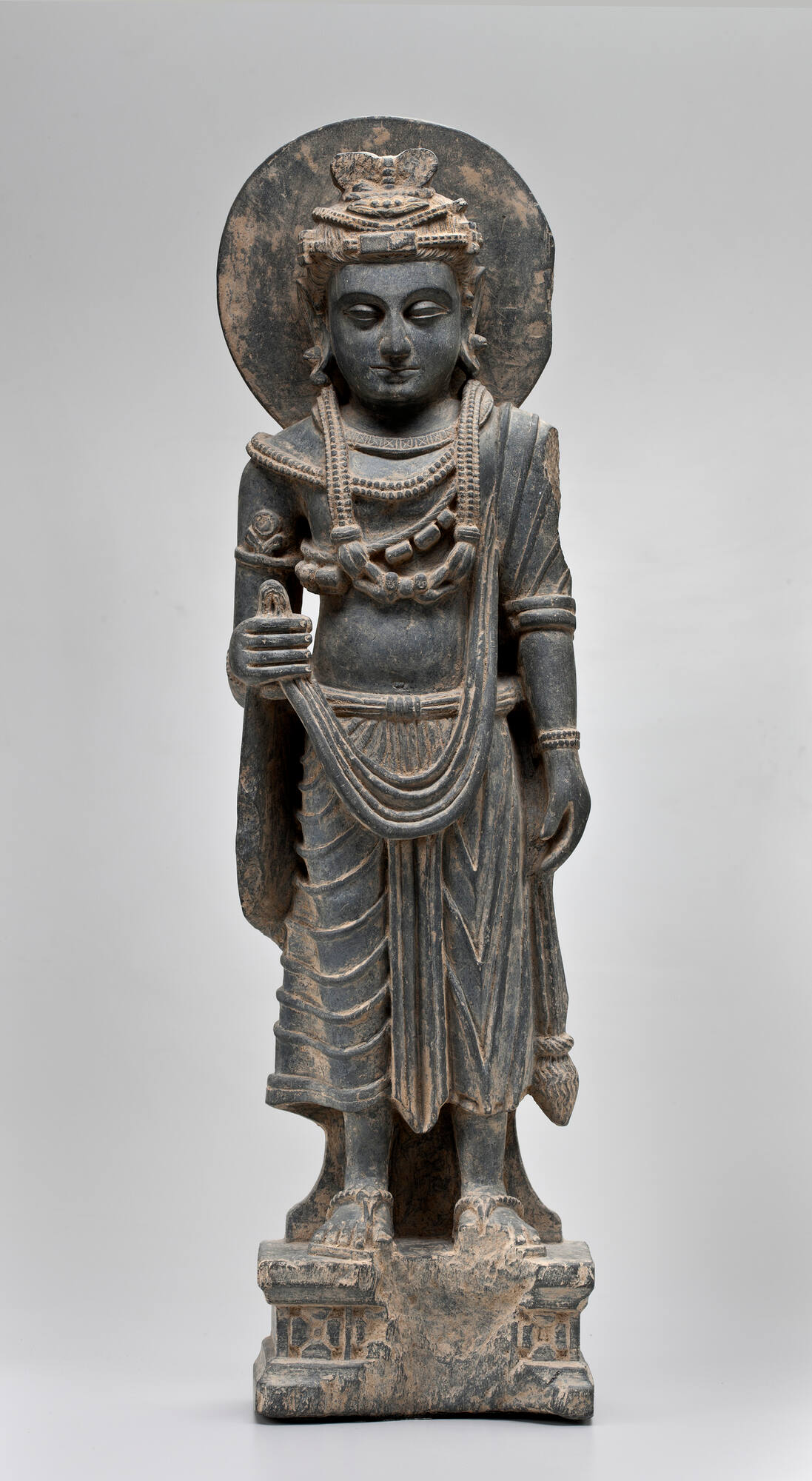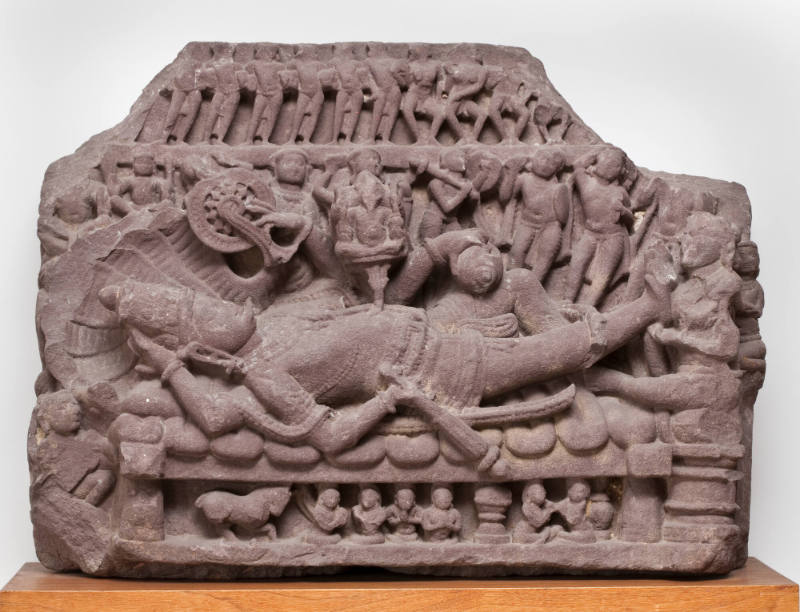
Object Details
Culture
Pakistan or Afghanistan, Gandhara
Date
ca. 3rd century
Medium
Gray schist
Dimensions
Height: 25 1/4 inches (64.1 cm)
Credit Line
Gift of N. Battle Hales and Jean S. Hales
Object
Number
81.109.012
Art historians generally credit the sculptors of Gandhara with the first representations of the Budd(…)
Art historians generally credit the sculptors of Gandhara with the first representations of the Buddha in human form. Previously, the Buddha was represented in symbols derived from episodes of his life, such as a wheel, a footprint, or a tree, symbolizing respectively his teachings, his travels, and his achieving enlightenment as he meditated under the Bodhi tree. The region of Gandhara, located in northwest India and Pakistan, bordered the Silk Road that ran from northern China to Mesopotamia and the Greco-Roman Empire. It is thought that the figure of the Buddha originated from representations of Greeks and Romans as they appeared on coins used along the Silk Road. The Buddha is draped in a cascade of pleats, much like the togas of Roman emperors seen in sculpture and on gold coins. Representations of Bodhisattvas, enlightened disciples of the Buddha who chose to forgo the final step to Buddhahood in order to preach the Buddha’s doctrine on Earth, appeared around the middle of the third century. Carved from the soft bluish slate or schist quarried from the hills north of Peshawar in modern Pakistan, our Bodhisattva is adorned like a prince in order to remind worshipers of his earthly nature as opposed to the supernatural aspect of the Buddha. His jewels may have been fashioned after representations of Persian and Sassanian deities. (From “A Handbook of the Collection: Herbert F. Johnson Museum of Art,” 1998)












